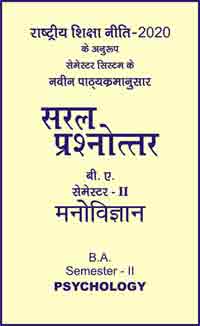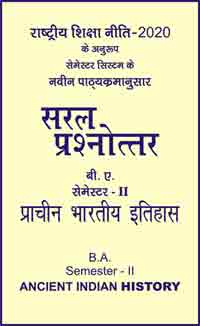|
बी एड - एम एड >> बी.एड. सेमेस्टर-1 प्रश्नपत्र-II - सोशियोलाजिकल पर्सपेक्टिव आफ एजूकेशन बी.एड. सेमेस्टर-1 प्रश्नपत्र-II - सोशियोलाजिकल पर्सपेक्टिव आफ एजूकेशनसरल प्रश्नोत्तर समूह
|
5 पाठक हैं |
|||||||
बी.एड. सेमेस्टर-1 प्रश्नपत्र-II - सोशियोलाजिकल पर्सपेक्टिव आफ एजूकेशन (अंग्रेजी भाषा मे)
Question- Explain the meaning of Culture. Point out types and characteristics.
Or
What is Meaning of Culture ?
Or
What is the Kind of Culture ?
Or
Describe the Characteristics of Culture.
Ans.
Definition of Culture
The various scholars have defined culture in the following manner :
-
Cuber : “In terms of anthropology culture is a continually changing pattern of learned behaviour and the products of learned behaviour including attitudes, values, knowledge and material objects which are shared by and transmitted among the members of society.”
-
Biersted : “Culture is that complex whole that consists of every thing we think, do and have as members of society.”
-
Tylor : “Culture is the complex whole which includes knowledge, belief, art, morals, law, custom and other capacities and habits acquired by man as member of the society.”
Kinds of Culture
According to the subject there are different kinds of culture :
(1) Individual culture,
(2) Communal culture,
(3) National culture and
(4) World culture.
Each individual has some personal traits and qualities which guide his habits of thinking and behaving in all fields of human activities.
These personal like dislikes, interests, modes of thinking and patterns of social behaviour constitute his personal culture. In the same way different communities have their distinct traits of life styles comprising specific modes of community beliefs and styles of living.
According to contents there are two types of culture in each society :
1: Material culture,
2: Non-material culture.
The contents of these culture are as follows :
(1) Material culture : Material culture includes all those man-made things and objects which human society has created for its physical welfare in times of peace and war. Items such as clothes, utensils, homes, roads, ornaments, T.V. radio, various machines, gadgets and various means of transport and communication are some examples of material culture.
(2) Non-material culture : Non-material culture includes all those ideals, attitudes and values which modify the behaviour of an individual. Language, literature, art, music, religion, customs and traditions etc. are some examples of non-material culture.
Characteristics of Culture
(1) Acquired Traits : Culture is the sum total of acquired traits. A new born baby is devoid of any trait. As he grows older, he acquires different ideals, attitudes and values by imitation and social contacts. These experiences contributes to the formation of his personal culture.
(2) Distinct Entity : Different societies of the world have their distinct cultural patterns establishing different identities of different nations.
(3) Transmission : Cultural traits and patterns are transmitted from generation to generation. Each generation is free to modify the cultural heritage and then transmit it to the next generation cultural patterns are powerfully conditioned and influenced by the trends which appear from time to time according to different circumstances and conditions. This transmission is continuing process.
(4) Utility : A culture is good if it has some utility to the individual as well as to the society. If it does not fulfil this purpose, it decays and dies out in the long run. It may be borne in mind that mutual give and take among different cultures is also an essential conditioning process. Generally, cultural fanaticism and snobbery promotes conflict and chaos. Hence one should see and adopt the cultural beauties and excellencies of all the cultural that exist in the world.
(5) Dynamism : Culture is not static but dynamic. It changes and grows. Due to rapid rise in the means of transport and communication a culture invades the other culture. It penetrates, interpenetrates, changes and grows. Our modern Indian culture is not that old culture which guided the nations of the world in the past.
|
|||||














